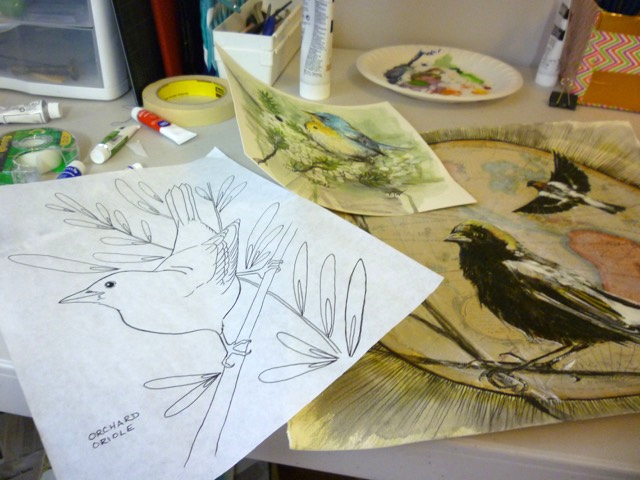ESPP and an Everglades Slough Slog

For two weeks in October, I had the privilege of living in Everglades National Park, as a guest of the Artist In Residence In the Everglades (AIRIE) program. The residency provides artists and writers with an opportunity "to live and work in Everglades National Park in order to explore and identify the relationship between nature and art." That relationship is as messy as it is rich, and, having returned from Florida to San Francisco, California, I plan to reflect on its complexities by writing essays and creating new artworks.
An important part of the AIRIE mission is "to reach a wider public by calling attention to [the] unique and endangered part of our national heritage." To this end, I presented a lecture to a class from Florida International University Honors College. The presentation began with a survey of my artwork, but transitioned into a talk about the importance of biodiversity and the Endangered Species Print Project (ESPP) model. AIRIE and ESPP are both unconventional efforts to draw popular attention to the plight of our world's imperiled species and habitats. I hope to see more creative partnerships between such enterprises and better funded organizations with more substantial memberships (e.g., World Wildlife Fund, The Nature Conservancy, The Sierra Club); these collaborations are more likely to reach the "wider public."
Local efforts are also vital, of course. The syllabus of "Everglades: from beginning to end?," the FIU class that I met with, is designed to introduce students to the natural history of the Everglades and "the political nature of local and regional environmental issues," but also to "read critically, to understand the interconnectedness of art, literature, and other disciplines." That's an exciting objective; professors Peter Machonis and Devon Graham, co-creators of the FIU class, should be cheered for their thoughtfulness and ambition.
After my lecture, I joined the professors and their students on a slough slog, an off-trail walk through "the river of grass." The students gamely sloshed through the sawgrass marshes and bald cypress stands; at day's end, I had the sense that being there, in the slow-moving water of "the glades," would fortify their relationship to the park lands in a way that no amount of classroom learning could have. Environmental education is a crucial element of a comprehensive conservation ethic, and creative, hands-on learning is the best way to acquaint our increasingly urban populace with the interconnectedness of all life.


Hi there friend, nice blog, i've made a blogpost about endangered species maybe you would like to take a quick look at it, i would be really grateful, thank you!
ReplyDeletehttp://www.midnightconceiver.com/2011/11/4-animals-at-risk-of-extinction.html